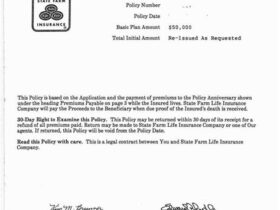Home insurance is a crucial safety net for homeowners, providing financial protection against a range of unforeseen events. Understanding what your home insurance covers, the different types of coverage available, and how to choose the right policy is essential for protecting your investment and peace of mind. This guide aims to clarify the complexities of home insurance cover in the US, helping you make informed decisions about your insurance needs.
What is Home Insurance?
Home insurance, also known as homeowners insurance, is a contract between you and an insurance company. In exchange for a premium, the insurer agrees to pay for losses to your home and its contents, up to the limits of the policy. This coverage typically includes damage from events like fire, windstorms, theft, and vandalism. It may also cover liability if someone is injured on your property. Home insurance is not legally required, but most mortgage lenders require it as a condition of the loan. Without home insurance cover, you would be left to pay that figure without any financial support.
Types of Home Insurance Coverage

A standard home insurance policy typically includes several types of coverage, each designed to protect different aspects of your property and financial well-being. Understanding these coverages is key to ensuring you have adequate protection.
Dwelling Coverage: This part of your policy covers the physical structure of your home, including the walls, roof, and foundation. It protects against damage from covered perils like fire, wind, hail, and vandalism. The amount of dwelling coverage you need should be equal to the cost of rebuilding your home if it were completely destroyed.
Other Structures Coverage: This covers structures on your property that are not attached to your main dwelling, such as detached garages, sheds, fences, and gazebos. Typically, this coverage is a percentage of your dwelling coverage, often around 10%.
Personal Property Coverage: This protects your belongings inside your home, including furniture, clothing, electronics, and appliances. It covers damage or loss from covered perils, even when these items are outside your home. You can choose between two types of personal property coverage:
- Replacement Cost Value (RCV): Pays the cost to replace the item with a new one, without deducting for depreciation.
- Actual Cash Value (ACV): Pays the current value of the item, taking depreciation into account.
Loss of Use Coverage: If your home is damaged and you cannot live in it, this coverage pays for additional living expenses, such as hotel bills, meals, and other costs, while your home is being repaired or rebuilt. The policy limits for loss of use are typically a percentage of your dwelling coverage.
Liability Coverage: This protects you if someone is injured on your property or if you accidentally damage someone else’s property. It covers legal fees, medical bills, and other expenses associated with the claim. Liability coverage is crucial for protecting your assets in case of a lawsuit.
Medical Payments Coverage: This pays for medical expenses for guests who are injured on your property, regardless of who is at fault. It is a no-fault coverage designed to quickly address minor injuries without the need for a lawsuit.
Common Perils Covered by Home Insurance

Home insurance policies typically cover a range of perils, but it’s important to understand what is included in your specific policy. Some common covered perils include:
- Fire and smoke
- Windstorm and hail
- Vandalism and malicious mischief
- Theft
- Explosion
- Lightning
- Falling objects
- Weight of snow, ice, or sleet
- Water damage from burst pipes or appliances
It’s worth noting that not all policies cover all perils. Some policies may exclude certain types of damage, such as flood or earthquake damage. In these cases, you may need to purchase separate coverage to protect against these risks.
Exclusions in Home Insurance Policies

While home insurance provides broad coverage, it’s important to be aware of the common exclusions. These are events or situations that are not covered by your policy. Common exclusions include:
- Flood: Standard home insurance policies do not cover flood damage. If you live in an area prone to flooding, you will need to purchase a separate flood insurance policy through the National Flood Insurance Program (NFIP) or a private insurer.
- Earthquake: Similarly, earthquake damage is typically excluded from standard policies. Earthquake insurance can be purchased as a separate policy or as an endorsement to your existing policy.
- Wear and Tear: Home insurance is designed to cover sudden and accidental damage, not damage that occurs gradually over time due to wear and tear.
- Pest Infestation: Damage caused by termites, rodents, or other pests is generally not covered.
- Neglect: If damage occurs because you failed to properly maintain your property, your claim may be denied.
- Acts of War: Damage caused by acts of war or terrorism is typically excluded.
- Intentional Acts: Damage you intentionally cause to your own property is not covered.
How to Choose the Right Home Insurance Cover

Selecting the right home insurance cover involves several considerations to ensure you have adequate protection without overpaying. Here are some tips to help you choose the right policy:
- Assess Your Needs: Determine the rebuild value of your home and the value of your personal property. Use online calculators or consult with a professional to get accurate estimates.
- Shop Around: Get quotes from multiple insurance companies to compare prices and coverage options. Don’t overlook insurers such as Direct Line and NFU Mutual, which may offer competitive rates.
- Understand Policy Limits: Make sure the policy limits are sufficient to cover your potential losses. Consider increasing liability coverage to protect your assets in case of a lawsuit.
- Review Deductibles: Choose a deductible that you can afford to pay out of pocket. A higher deductible will typically result in a lower premium, but you will need to pay more if you file a claim.
- Read the Fine Print: Carefully review the policy documents to understand the terms and conditions, including any exclusions or limitations.
- Consider Endorsements: If you have specific needs, such as coverage for valuable items or protection against flood or earthquake damage, consider adding endorsements to your policy.
- Check Customer Reviews: Look for insurers with good customer service ratings and a reputation for handling claims fairly and efficiently.
Saving Money on Home Insurance
While it’s essential to have adequate home insurance cover, there are several ways to save money on your premiums:
- Increase Your Deductible: Raising your deductible can significantly lower your premium.
- Bundle Your Policies: Many insurers offer discounts if you bundle your home and auto insurance policies.
- Improve Home Security: Installing security systems, smoke detectors, and other safety devices can qualify you for discounts.
- Maintain Your Home: Regularly maintain your home to prevent damage and reduce the risk of claims.
- Review Your Coverage Annually: Review your coverage each year to ensure it still meets your needs and that you are getting the best possible price.
- Shop Around Regularly: Compare quotes from multiple insurers each year to see if you can find a better deal.
By understanding the different types of home insurance cover, common perils, exclusions, and how to choose the right policy, you can protect your home and financial well-being while saving money on your premiums. Remember to shop around, compare quotes, and carefully review your policy to ensure you have the coverage you need.




Leave a Reply